Integers
An integer is a whole number that can be positive, negative, or zero. In other words, integers are the set of numbers {..., -3, -2, -1, 0, 1, 2, 3, ...}.
Types of Integers
There are three types of integers:
- Positive Integers: These are the whole numbers greater than zero, such as 1, 2, 3, and so on.
- Negative Integers: These are the whole numbers less than zero, such as -1, -2, -3, and so on.
- Zero: It is neither positive nor negative, and is denoted by the number 0.
Operations with Integers
Integers can be added, subtracted, multiplied, and divided just like other numbers. The rules for operations with integers are:
- Addition: When adding two integers with the same sign, add their absolute values and keep the same sign. When adding integers with different signs, subtract the smaller absolute value from the larger absolute value and use the sign of the integer with the larger absolute value.
- Subtraction: Subtraction of integers can be thought of as adding the opposite. That is, a - b is the same as a + (-b).
- Multiplication: The product of two integers with the same sign is positive, while the product of two integers with different signs is negative.
- Division: Division of integers follows similar rules to multiplication, where the quotient is positive if the two integers have the same sign, and negative if they have different signs.
Examples
Here are some examples of operations with integers:
- Adding two positive integers: 3 + 5 = 8
- Subtracting a negative integer from a positive integer: 7 - (-4) = 7 + 4 = 11
- Multiplying a positive and a negative integer: 6 * (-2) = -12
- Dividing a negative integer by a positive integer: (-10) / 2 = -5
[Integers] Related Worksheets and Study Guides:
.◂Math Worksheets and Study Guides First Grade. Patterns
Study Guide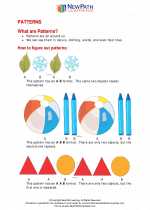 Patterns
Patterns  Activity Lesson
Activity Lesson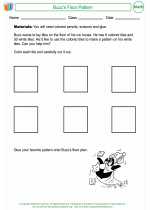 Buzz's Floor Pattern
Buzz's Floor Pattern  Worksheet/Answer key
Worksheet/Answer key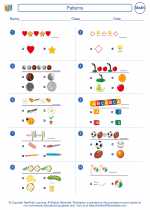 Patterns
Patterns  Worksheet/Answer key
Worksheet/Answer key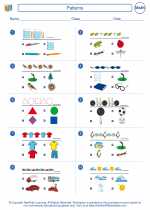 Patterns
Patterns  Worksheet/Answer key
Worksheet/Answer key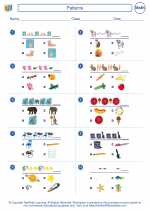 Patterns
Patterns  Worksheet/Answer key
Worksheet/Answer key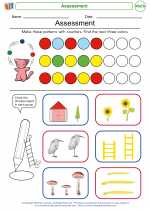 Assessment
Assessment  Worksheet/Answer key
Worksheet/Answer key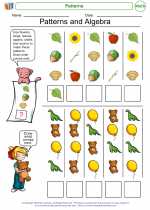 Patterns
Patterns  Worksheet/Answer key
Worksheet/Answer key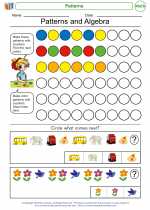 Patterns
Patterns  Worksheet/Answer key
Worksheet/Answer key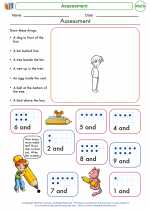 Assessment
Assessment  Worksheet/Answer key
Worksheet/Answer key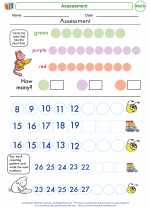 Assessment
Assessment  Worksheet/Answer key
Worksheet/Answer key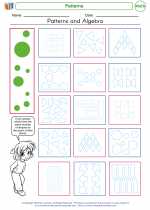 Patterns
Patterns  Worksheet/Answer key
Worksheet/Answer key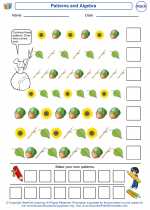 Patterns and Algebra
Patterns and Algebra  Worksheet/Answer key
Worksheet/Answer key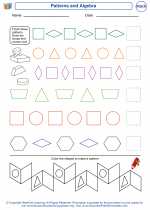 Patterns and Algebra
Patterns and Algebra  Worksheet/Answer key
Worksheet/Answer key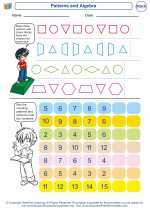 Patterns and Algebra
Patterns and Algebra  Worksheet/Answer key
Worksheet/Answer key Patterns and Algebra
Patterns and Algebra  Worksheet/Answer key
Worksheet/Answer key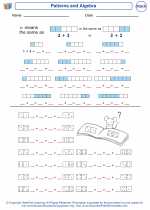 Patterns and Algebra
Patterns and Algebra  Worksheet/Answer key
Worksheet/Answer key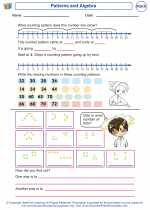 Patterns and Algebra
Patterns and Algebra  Worksheet/Answer key
Worksheet/Answer key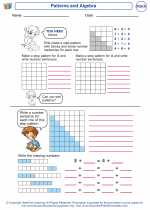 Patterns and Algebra
Patterns and Algebra  Worksheet/Answer key
Worksheet/Answer key Christmas Patterns
Christmas Patterns  Vocabulary/Answer key
Vocabulary/Answer key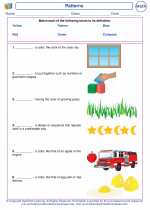 Patterns
Patterns 

 Activity Lesson
Activity Lesson
 Worksheet/Answer key
Worksheet/Answer key
 Worksheet/Answer key
Worksheet/Answer key
 Worksheet/Answer key
Worksheet/Answer key
 Worksheet/Answer key
Worksheet/Answer key
 Worksheet/Answer key
Worksheet/Answer key
 Worksheet/Answer key
Worksheet/Answer key
 Worksheet/Answer key
Worksheet/Answer key
 Worksheet/Answer key
Worksheet/Answer key
 Worksheet/Answer key
Worksheet/Answer key
 Worksheet/Answer key
Worksheet/Answer key
 Worksheet/Answer key
Worksheet/Answer key
 Worksheet/Answer key
Worksheet/Answer key
 Worksheet/Answer key
Worksheet/Answer key
 Worksheet/Answer key
Worksheet/Answer key
 Worksheet/Answer key
Worksheet/Answer key
 Worksheet/Answer key
Worksheet/Answer key
 Worksheet/Answer key
Worksheet/Answer key
 Vocabulary/Answer key
Vocabulary/Answer key

The resources above cover the following skills:
Algebra (NCTM)
Understand patterns, relations, and functions.
Recognize, describe, and extend patterns such as sequences of sounds and shapes or simple numeric patterns and translate from one representation to another.
Analyze how both repeating and growing patterns are generated.